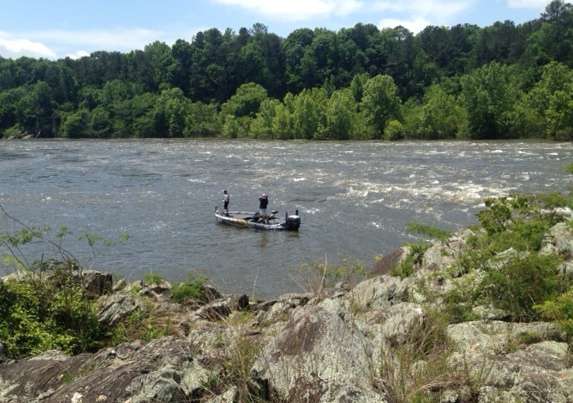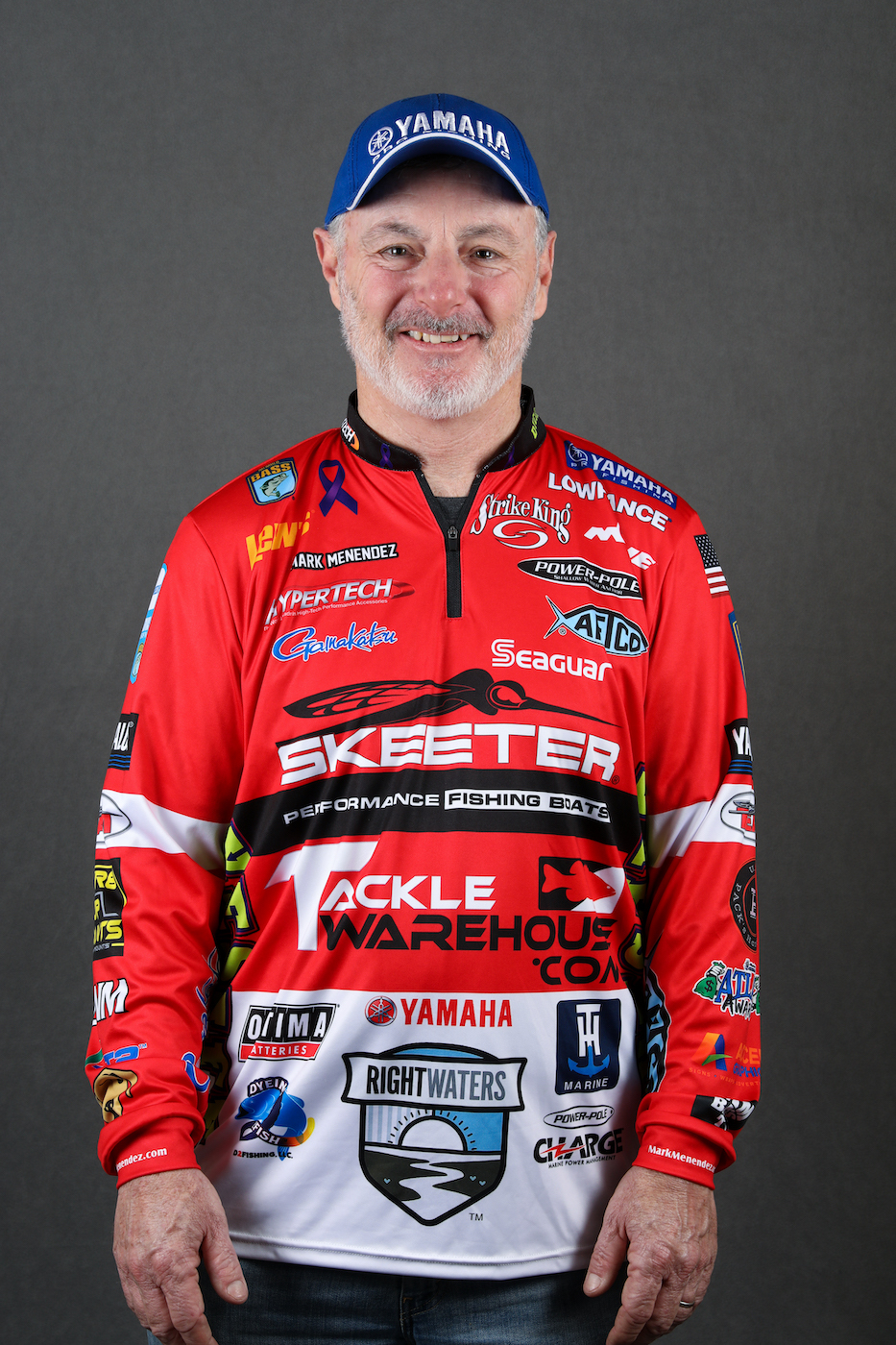
It’s a rare day when there isn’t some current somewhere in the water we’re fishing. It may not be obvious, but it’s there. Understanding it, and how it affects bass, will make a huge difference in how many you catch.
Here’s how I think about it…
Traditional current is water that moves along in a river or reservoir. It’s what we think about when we hear the word current. Typically it flows from the headwaters down towards the dam. Regardless of whether it’s strong or weak it’ll position the fish in a predictable way.
Bass — largemouth, spots and smallmouth — will almost always find a break of some sort and position themselves behind it with their heads facing forward, into the water flow. It might be that they do this to avoid fighting a constant flow of water against them or they might do it because there’ll be forage moved along in their direction. Why really doesn’t matter.
The best way to make them bite is to bring your lure back with the current and into their “space.” Position your boat so that you can throw up above the break and have you lure move down past them from a natural direction. That’s what they’re used to seeing. It’s what they’ll bite.
There is another theory about making them bite, however. Some anglers believe that retrieving a lure upstream over their backs will startle them and generate a reflex bite. That may be true in some cases, maybe in really clear water, but it’s just as likely to run them off as it is to make them bite. I rarely, if ever, do this.
Let’s move on to another kind of current, one that’s different from traditional current. That’s the current produced when the water level rises and fall. We’ll talk about falling water first.
Bass don’t like the roof over their heads to start dropping down on top of them. They move immediately when they feel the current caused by dropping water. And, in my experience that movement almost always is to a point somewhere that’s made out of something.
I could give you a hundred examples of what I mean when I say a point. I don’t need to do that if you’ll keep in mind the idea that a point doesn’t have to be made out of dirt, gravel or rock and it doesn’t have to be shaped like an ice cream cone. Some of the best ones I’ve ever fished in dropping water were formed by grass, timber, drift and in a couple of cases manmade objects.
The opposite of dropping water is rising water. It creates current, too, but its effect on bass is totally different.
To begin with their movement is much slower. They’ll follow the water in, but it’ll take them one or two days to get started. It’s like they want to make sure that what they’re feeling is real. And when they do make that movement they can be difficult to find, pattern and catch. They scatter and that creates too many places to fish. There may be a hundred trees with water around them instead of just one or two along the shore.
About all I can say is that as long as the water is still rising you should fish everything you can. Don’t stop and don’t be timid. A picnic table in a flooded parking lot or an outhouse might be just as good as a big tree stump or a huge boulder.
When the water stops rising and starts holding steady your options aren’t as numerous. I do my best to find the back shoreline and, if I can get to it, I fish it like any other shoreline. There aren’t likely to be high numbers of bass there but there will be a handful and they’ll usually bite. It’s one way to cut down on your options.
Here’s a synopsis of what I’ve tried to say in this column: In traditional current fish with the idea that the fish are looking into it. If the water is falling, go deeper and to the points immediately. If the water’s rising, stay put for a day or two and then move in and hope for the best.
This is basic, I know. The thing is, though, that sometimes we allow our fishing to get too complicated. That’s never a good thing.

